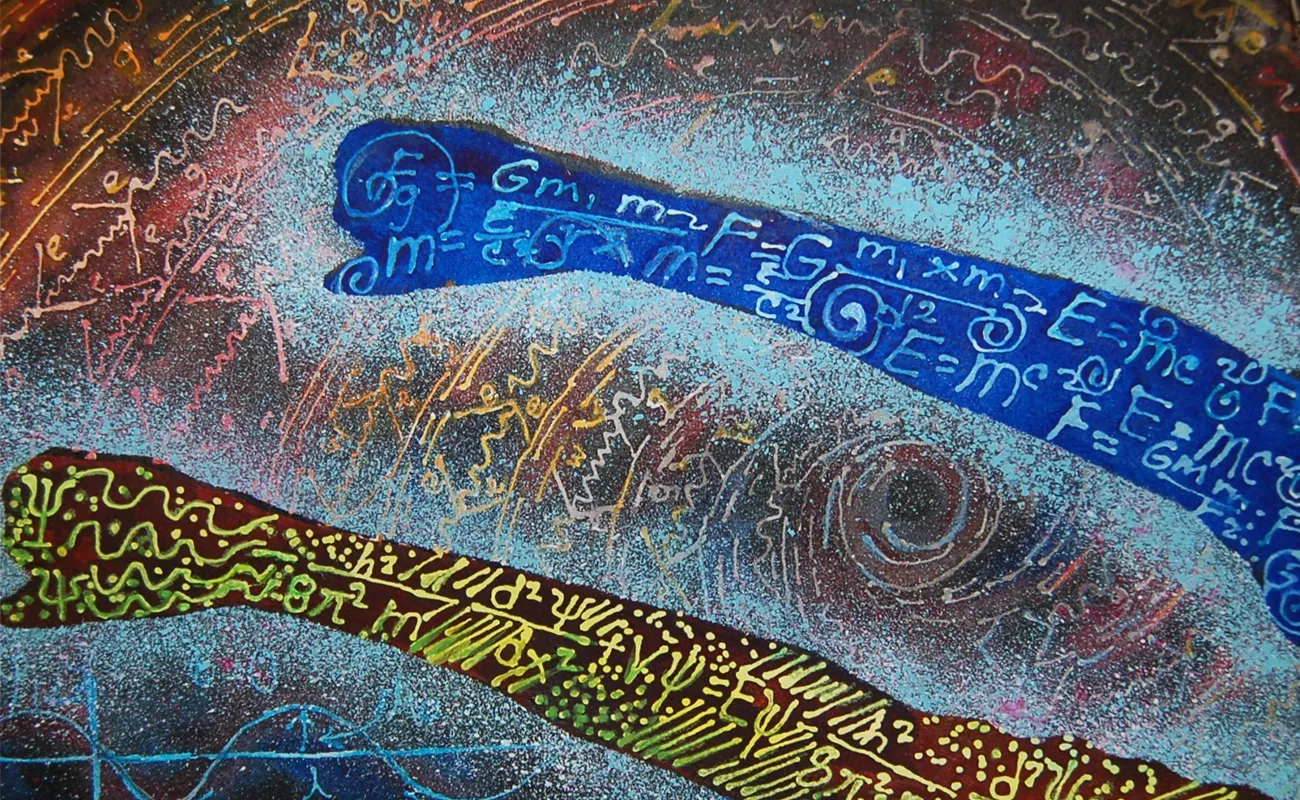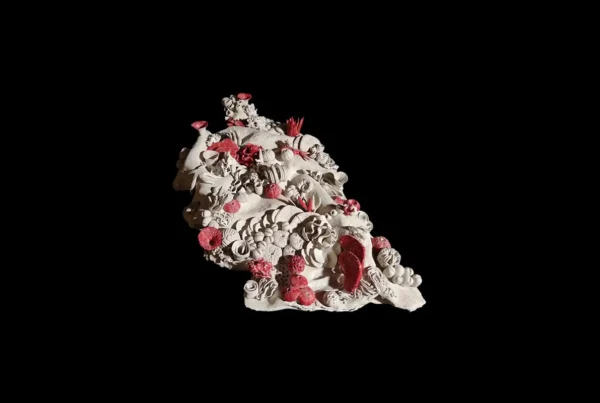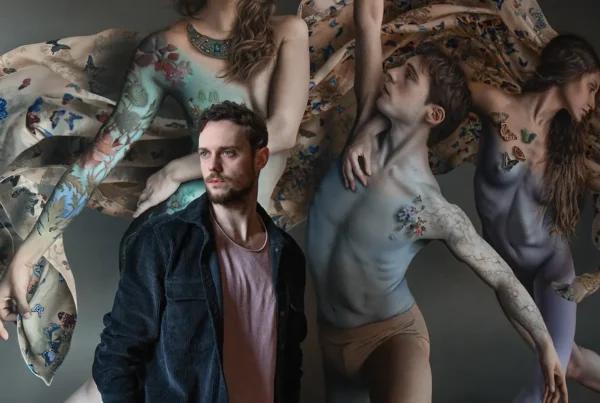“Art was always part of my life, essential. When I was seventeen I outwardly confirmed what I had always been doing was now my life’s work.”
A Journey Through Cultural Richness
Jalal Quinn‘s artistic journey is deeply intertwined with her upbringing in Washington, D.C., where she was surrounded by a plethora of cultural institutions and diverse global influences. Her father, a Foreign Correspondent for the Associated Press, and her mother, a Remedial Teacher, nurtured her early exposure to the arts. Frequent visits to the National Gallery of Art and the Smithsonian Museums, particularly the Freer Gallery, the Phillips Collection, and the Washington Gallery of Modern Art, significantly shaped her artistic sensibilities. These experiences were enriched by meetings with prominent figures such as Walter Hopps, Vincent Van Gogh II, Kenneth Noland, and Ad Reinhardt.
Quinn’s formative years were marked by an immersion in the international atmosphere of Washington, D.C., complemented by her family’s travels to Europe in 1955. Visiting museums in Italy and the Louvre in Paris broadened her understanding of art beyond American borders. Her exposure to the extended space concept in Japanese and Chinese folding screens inspired her to explore painting in series, a method that allowed her to develop and progress visual ideas over time. The influence of Qi Baishi’s work in China left a profound impact, blending traditional techniques with a contemporary approach.
Quinn’s international experiences expanded further during her time in China, where she lived for over a decade, teaching English and Contemporary Western Painting from 1990 to 2004. This period, though briefly interrupted between 1997 and 2000, was marked by significant achievements. In 1994, she was honored with the Friendship Award, the highest national award a foreigner can receive in China, recognizing her contributions in both art and education. That same year, she also received the Liaoning Provincial Award and the Shenyang City Award, further solidifying her influence in the region.
Her unique ability to blend Chinese and Western artistic styles was particularly celebrated in 1997, when she participated in an exhibition in Shenyang titled “Welcome Hong Kong Back to the Mainland.” Quinn was awarded a Special Award by the judges, who praised her for her innovative fusion of artistic traditions, noting that they had never seen a Westerner combine these styles so effectively.
Private art lessons from a British teacher, who emphasized classical European basics in drawing and painting, further solidified her foundation. These lessons commenced when she was just nine years old, embedding a rigorous discipline and appreciation for meticulous craft in her artistic practice. This rich tapestry of cultural exposure and rigorous training set the stage for Quinn’s unique artistic voice to emerge.
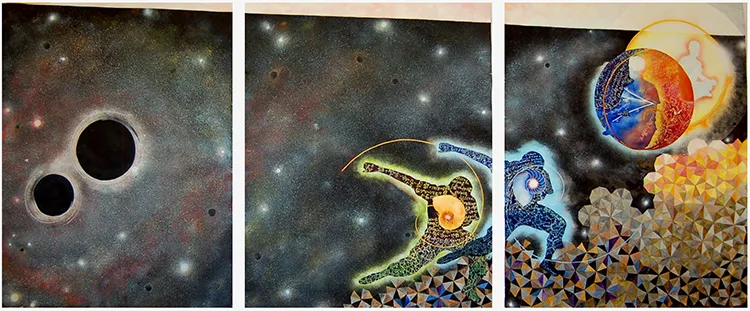
Jalal Quinn: An Artist’s Awakening
From a tender age, Jalal Quinn discovered the profound impact of art on her consciousness. Drawing and painting from the age of three, she experienced a unique awareness and heightened sense of self when engaged in creative activities. This transcendental experience of becoming absorbed in her work cultivated a deep love for art that continued to grow as she matured. Attending art classes at American University, she realized that other artists shared this transformative experience, solidifying her commitment to art as her life’s work.
By the age of seventeen, Quinn embraced her artistic identity, affirming that creating art was not only her passion but also her destiny. This commitment was a natural progression from her childhood experiences, where art was an essential part of her existence. The act of creating became a meditative practice, allowing her to navigate through personal and universal themes.
Quinn’s art is characterized by an independent spirit, unbound by any specific style or school. She approaches each piece with curiosity and an investigative mindset, continuously seeking to discover new ideas and perspectives. This openness to exploration is reflected in her practice of painting in series, where she develops visual ideas over multiple canvases, inviting viewers to engage with the evolution of her work in a dynamic and immersive manner.
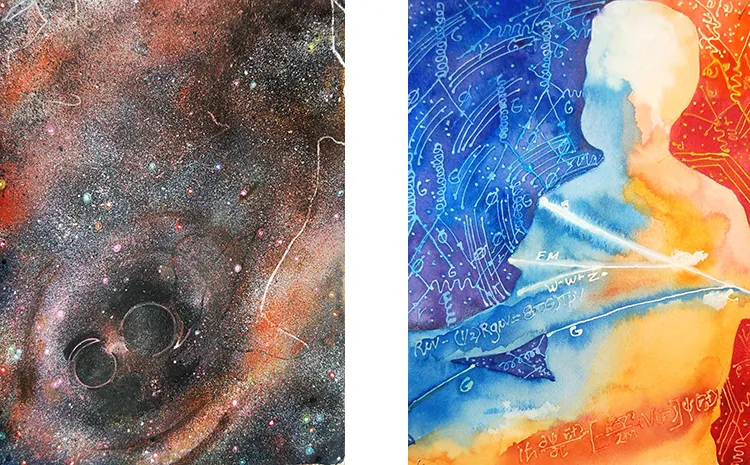
The Essence of Light and Spirit
Quinn’s paintings are a vivid exploration of light and its interplay with human emotions and spiritual essence. Her works radiate with vibrant colors and an ethereal quality that transcends verbal description. She views painting as a bridge to the invisible movements of emotions and the fragrances of the spirit, capturing the essence of universal matter and the life beyond in her art.
Her artistic philosophy centers on the pursuit of light and the inner journey toward peace and understanding. Quinn’s work is a reflection of her belief in the interconnectedness of all things, resonating with the migrational forces of humanity striving for harmony. Her art invites viewers to experience these transient moments of vision and revelation, offering a glimpse into the deeper layers of existence.
Quinn’s workspace is a sanctuary that fosters creativity and concentration. She emphasizes the need for time, space, order, and solitude, free from interruptions. Her studio is meticulously organized with essential tools like watercolor palettes, excellent sable brushes, and large, uncluttered worktables. Light and music play crucial roles in her creative process, providing the perfect ambiance for her artistic endeavors. This careful curation of her environment allows Quinn to delve deeply into her creative process, producing works that are both profound and illuminating.
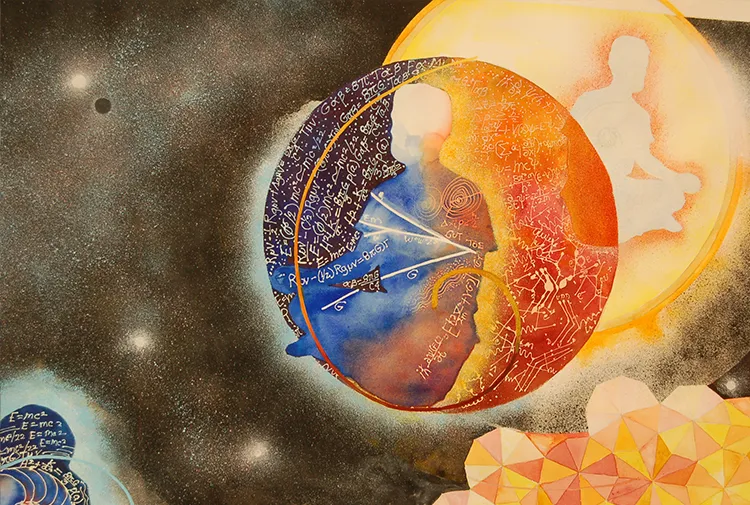
Jalal Quinn: Inspirations and Influences
Jalal Quinn’s art is profoundly influenced by a diverse array of artists and thinkers. James Van Dyk, whose paintings and sculptures resonated with her soul, played a pivotal role in guiding her towards her own artistic path. His influence, combined with the contemporary art scene of the 1960s, enriched her understanding and approach to art. Her father, John M. Hightower, with his dual interest in international reporting and physics, introduced her to the intriguing intersections of science and art. This fusion of scientific and spiritual exploration is a recurring theme in Quinn’s work.
Quinn holds a deep belief in the harmony between religion and science, a principle that she incorporates into her art. She seeks to depict the unity of humanity, often using silhouettes to represent the diverse peoples of the world. Influences from a wide range of artists, including Vincent Van Gogh, Modigliani, Qi Baishi, and contemporary figures like Andy Warhol and Jackson Pollock, have left indelible marks on her style and thematic explorations.
One of her most significant pieces, “Balance,” encapsulates her exploration of the intersection between science and spirituality. The verse accompanying this painting reflects her contemplation of opposing theories and the quest for harmony between scientific inquiry and spiritual understanding. This piece, along with many others, illustrates her dedication to capturing the dynamic balance between dissonance and harmony, a central theme in her artistic journey.
Quinn’s preferred medium, watercolor, is particularly suited to capturing the swift, fleeting images of the mind’s eye. She appreciates its unforgiving nature, which parallels the acceptance of one’s actions in life. While she has experimented with various media, including oil, acrylic, and collage, watercolor on Arches paper remains her favored medium, allowing her to express her vision with precision and clarity.



